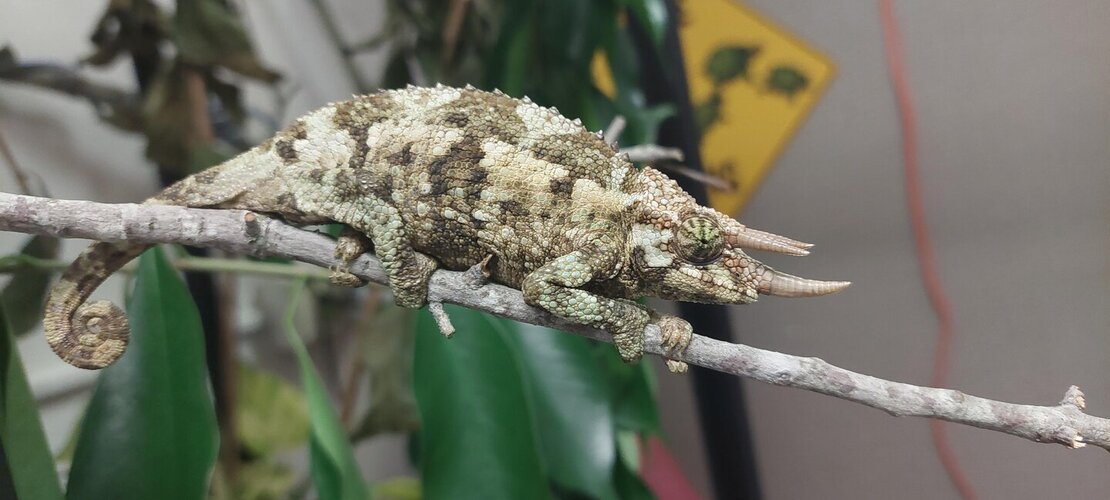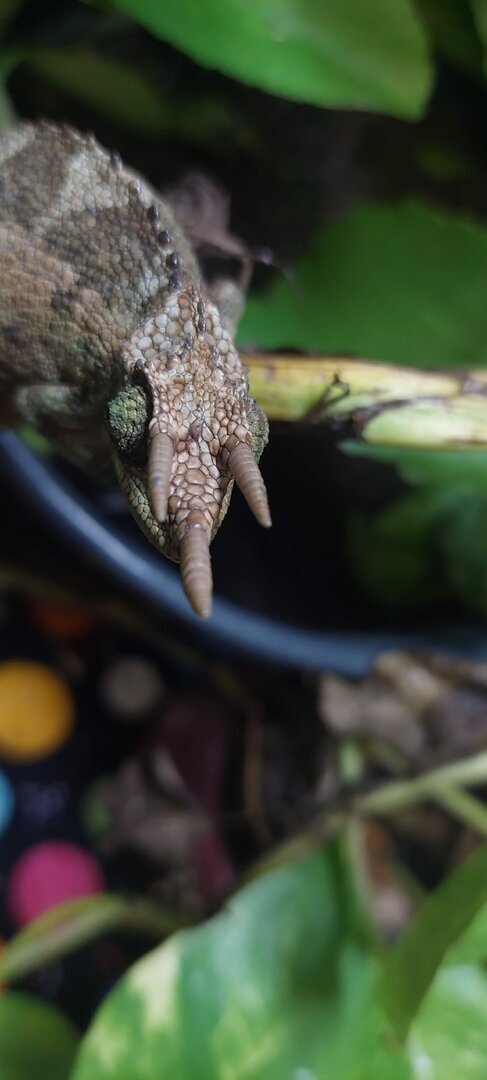ElleArranda
Member
So I bought a few chams week and a half ago (from a guy on craigslist that kept them altogether in a cage, ugh) and I'm trying to determine subspecies. I'm thinking she's Trioceros jacksonii merumontanus but would like input. I don't see females with these type horns... and I thought it was too gravid looking to be male.















